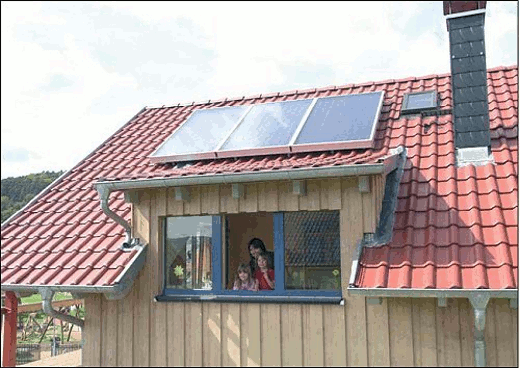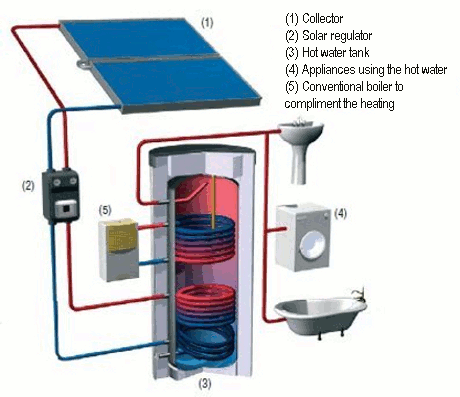Solar Heating Information: Installation of a Heat System for Homes.
As part of Wind Up Battery’s push to get everyone thinking about renewable energy, we present, just in time for the summer, a real summer theme: solar energy. Here, it is not a question of photovoltaic cells which convert solar energy into electricity, but of thermal solar installations, that is to say the production of heat using solar heat collectors. Unlike photovoltaic systems where extremely complex physical processes transform the sunlight into electric current, solar heating is within the reach of everyone: the solar radiation which hits the collector is transformed into heat which is used for heating the hot water or heating circuit. Solar panels can therefore be located everywhere and significantly reduce the costs of heating. In the European City of Luxembourg for example, there are such installations on a number of buildings. In addition, Luxembourg subsidizes private solar thermal installations, this subsidy being something that Wind Up Battery strongly believes other governments, local and national should strongly consider. After all, subsidies will help everone join in with the renewable energy revolution, and the more people who use renewable energy, the better placed will Governments be in reaching their renewable energy targets.
The Use of Solar Energy
The sun sends a considerable amount of energy to the Earth. Staying with Luxembourg as an example, if captured, the total solar energy provided by the sun would represent approximately 80 times Luxembourg’s primary energy requirements. For thermal energy, mainly collectors are used. The majority of these are used for the production of hot water and create, depending on their design, savings of 50% to 70 % of the energy consumption required for the production of hot water.

Solar systems are also more and more used to assist in the heating of homes and office buildings. Although the heating requirements of a building are the highest in winter when available solar energy is minimal, even in wintertime it is still possible to save approximately 30% of the fuel necessary for the heating of a home with low power consumption. The total solar radiation reaching the earth consists of diffuse and direct components. Diffuse radiance is that which is dispersed by the clouds and vapour - it comes from the entire sky and cannot be exploited enough because of its weak energy density. The direct solar radiation is usable for solar heating, which is why the collectors in the Northern Hemisphere should preferably be directed towards the south.
Solar Heating Systems
Hot Water Installations
A thermal solar installation for the production of hot water includes a solar panel, a regulation unit with a pump and a well-insulated a hot water tank. Solar heat is picked up in the collector and transmitted to the tank by a heat exchanger which has a liquid inside it to exchange the heat. The regulator, equipped with a pump, assures that this process happens in an optimal way. Heat is then passed to the water in the tank across a heat exchanger in order that the tank water can be used as hot water.

Typical Set Up of a Solar Heating Installation
Installations for the support of home heating
If the warmth inside your home or other buildings is to be partially provided by solar heating, it is necessary to use a special solar tank in order to have a buffer of heat sufficient for the heating. Solar heat is then used firstly for the production of warm tap water, the surplus is used for the heating. If the solar radiation is not enough, it is supplemented by a conventional boiler.
 Based on a report from The Town of Luxembourg.
Based on a report from The Town of Luxembourg.
Please link to this page.
- Renewable Energy:
- Login to post comments
